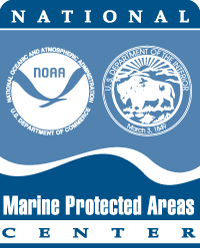Disaster Preparedness
A Resource by the Marine Protected Areas Federal Advisory Committee (These statements do not necessarily reflect the positions of NOAA or the U.S. Government)

Safety first and foremost!
Does your managing agency already have a disaster plan? Does this plan consider or include cultural resources protective and response measures? If not, take these steps:
- Identify important landscape features:
- The known record: types of historic properties (submerged and terrestrial archaeological sites, historic structures and buildings, tribal, cultural or historic landscapes, traditional cultural properties, and locations possessing religious and/or cultural significance to communities).
- Past and/or ongoing archaeological, historic, and ethnographic investigations used to identify significant properties and communities that have cultural connections to specific properties, landscapes, or exploitation and/or extraction of resources (fisheries, plants, etc.).
- Once constituent communities (both indigenous and later post-contact groups) have been identified, managers need to foster personal connections with these communities. Improved and honest communication facilitates improved identification and, ultimately management, of important and/or significant historic properties. It enables managers to identify individuals and/or community organizations that can be drawn upon during the planning process and the subsequent response.
- Identify qualified individuals (staff or local community) that can be drawn upon following the disaster to assess and document impacts to known historic properties and document newly identified features and/or historic properties and their settings.
Plan components:
- Pre-disaster preparation and activities;
- Post-disaster response (assessment of impacts to known historic properties; identification, documentation, and assessment of impacts to newly discovered features and/or properties);
- Remedial actions needed to protect a historic property, minimize and/or mitigate adverse impacts. Such actions will depend upon property type, location, extent of damage, and community input and involvement. Mitigation and resiliency planning is now a major part of this. Funds for planning on non-federal lands are available through FEMA’s Hazard Mitigation Grant Program (HMGP), as well as resources to plan for the securing and protection of vital data and resources prior to and during the response to disasters.
No plan will cover every eventuality. Flexibility is imperative, as is knowing and working with the various communities who consider these historic properties, landscapes, and places as integral to their identity and livelihood.
 Marine Protected Areas
Marine Protected Areas